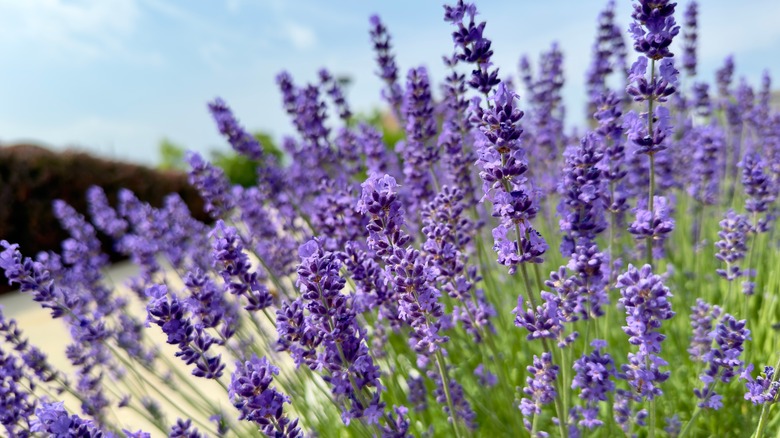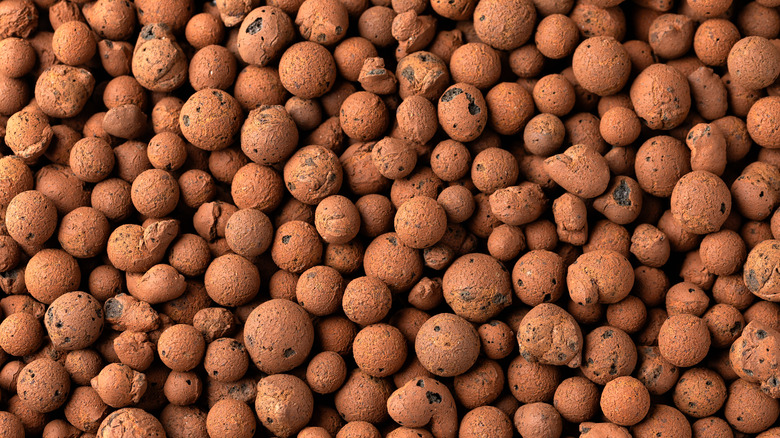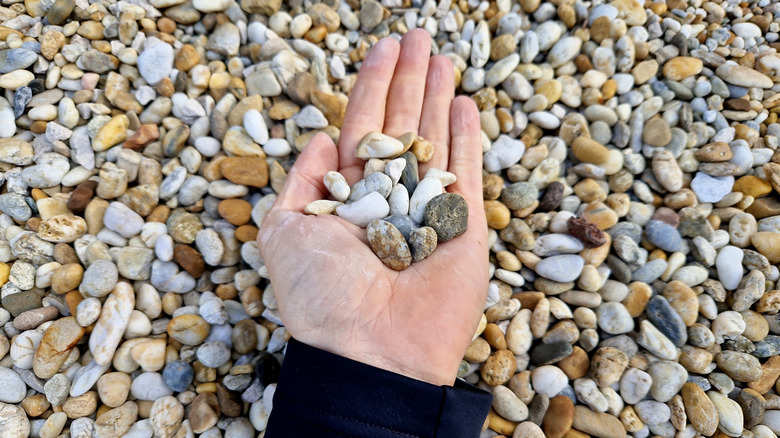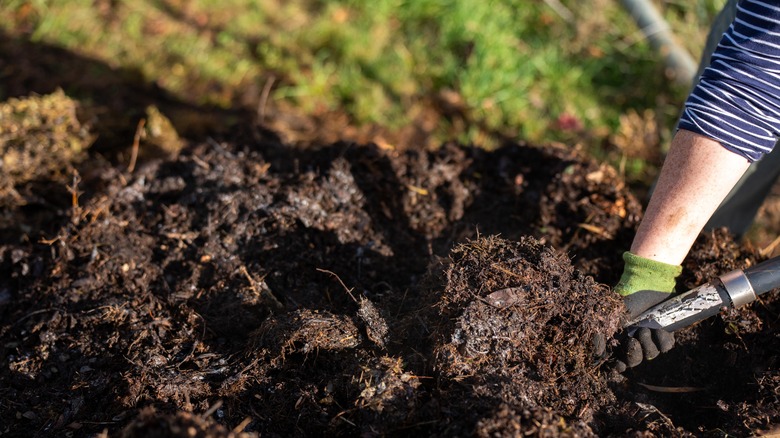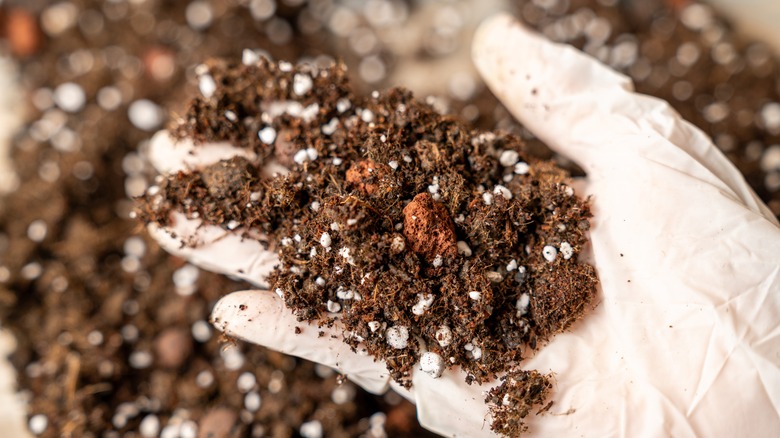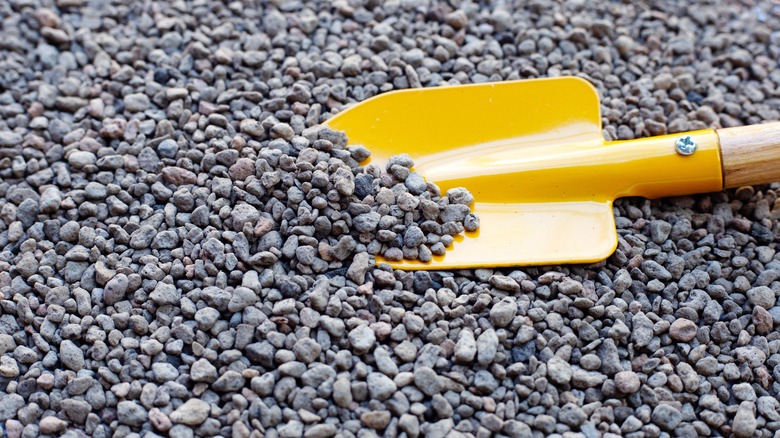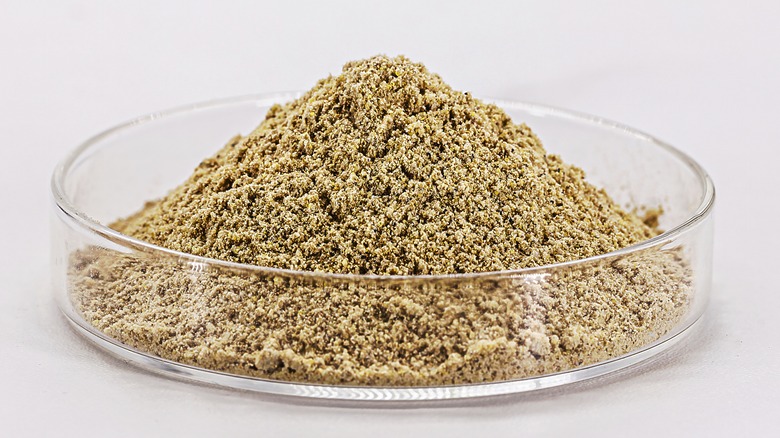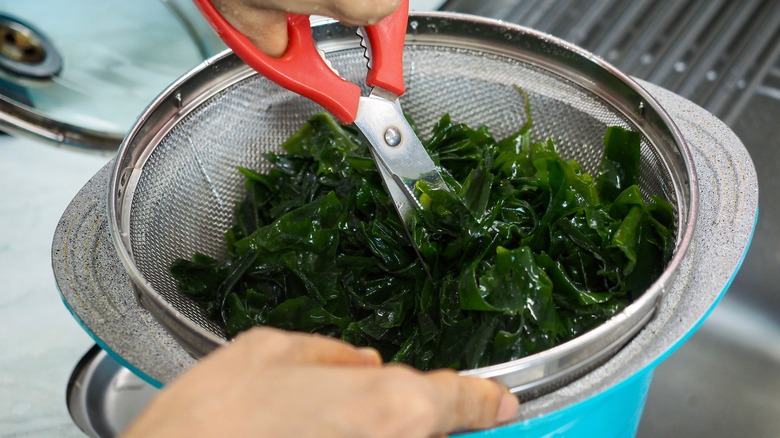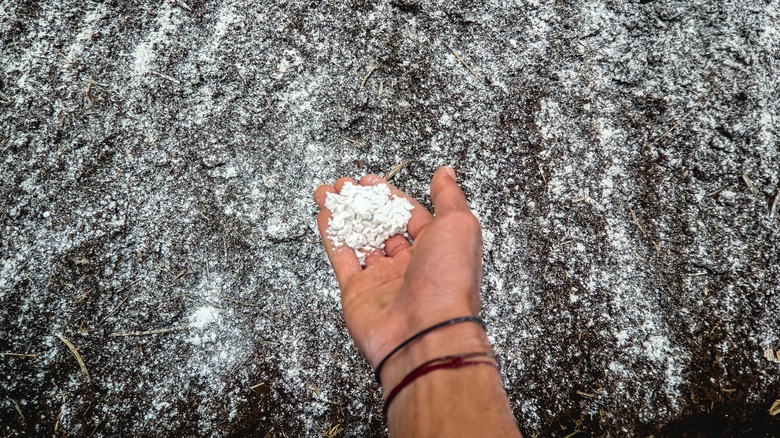Want More Blooms On Your Lavender Plants? Here Are 8 Simple Soil Additions You Need
We may receive a commission on purchases made from links.
Lavender is typically known as a beginner-friendly herb. Easy to maintain, drought-tolerant, and stunning, this bright purple plant can be a wonderful addition to your garden. While lavender typically only requires well-draining soil and a spot in the sun, there are a few ways you can improve the health of your lavender plants just by adding a few simple ingredients to the soil. These are optional, but, based on your garden's individual characteristics, might be helpful in boosting your lavender's colorful blooms. If your lavender is not blooming at all or producing more green than purple flowers, you might want to consider supplementing your soil.
When it comes to maintaining lavender, less is usually more, as this herb doesn't require fertilizers to grow. However, if you have more fertile soil, additions like gravel, clay pebbles, and sand can not only boost your lavender's appearance, but also prevent it from getting root rot. These additions are typically affordable and can be found at your local home improvement or gardening store. If you are unsure what type of soil you have, you can easily purchase a soil test kit, like the Luster Leaf Rapitest Soil Test Kit, for under $15.
Clay pebbles
Clay pebbles, also known as lightweight expanded clay aggregate (LECA), can be hugely beneficial to your lavender plant's soil. If your garden soil tends to be waterlogged, heavy, and slow-draining, the addition of these porous clay pebbles allows excess moisture to drain away from your plant's roots while still maintaining enough moisture to hydrate the plant. For lavender to grow and bloom successfully, it requires well-draining soil textures, like LECA. Since lavender is native to the Mediterranean, this herb thrives in rocky soil, and adding clay pebbles can help to replicate that texture.
Gravel
Since lavender thrives in a textured and rocky environment, you can also add gravel to help improve the conditions of your herb's soil, which in turn will boost your lavender's blooms. Instead of adding smooth or round pieces of gravel, opt for an angular version, like pea gravel, as those shapes will further assist your soil in draining properly. You can mix your gravel directly into the soil. Light-colored gravel will also help reflect additional heat from the sun to your plant, which lavender tends to prefer.
Compost
While lavender plants do thrive on low-nutrient soil, you might find it helpful to add a small amount of compost to your garden bed or pots. As long as your compost is coarse and well-draining, the herb can benefit from the nutrients and produce more blooms. You can amend the top six inches of your soil with compost around your lavender plants. When using compost as a soil supplement, make sure not to add too much or too heavy a material. Ideally, you can add a blend of compost and a gritty material like sand into the soil.
Perlite
Another addition to aerate your lavender's soil and boost its flowers is perlite. One of its many benefits as a soil amendment, perlite improves your soil's drainage, which is especially helpful when dealing with a root-rot-prone herb like lavender. A root-rotted lavender will not produce many blooms. Perlite is made of volcanic glass, and these tiny bubbles keep your soil loose to prevent lavender from getting waterlogged, which can negatively affect the plant's ability to bloom. The general rule of thumb when adding perlite to your garden is to combine half perlite with half compost or peat moss to blend into the soil.
Pumice
While perlite is a man-made material of volcanic glass, pumice is a naturally occurring rock, making it a heavier and longer-lasting option than perlite. If your lavender isn't blooming, and your soil is heavy and waterlogged, consider adding pumice to assist your lavender plant with draining. Pumice improves drainage while retaining enough moisture to hydrate the plant and nourish its growing flowers. Plus, the material is heavy enough that it can help keep your herb from falling over, especially if it's planted in containers. When adding to your soil, you can combine one part pumice with three parts soil.
Bone meal
If a soil test reveals that your garden leans more on the acidic side, with a pH below 7, you might want to add bone meal fertilizer to the mix. Bone meal can not only help boost your soil's calcium and phosphorus levels, but it can also advance your lavender's root development. For a lavender plant to bloom successfully, it requires the correct soil pH range. If it's too acidic, you're less likely to see flowers. Bone meal, which is made from animal bones ground into a powder, helps your plants to flower. Plus, its slow-released nutrients keep lavender fed.
Kelp
Kelp can be another surprising yet useful addition to your lavender's soil. Though lavender tends to prefer simple soil, adding kelp can help boost the plant's blooms and nutrients, specifically its potassium levels. Low potassium levels can present in lavender as short flower stems and stunted growth. Add kelp as a DIY fertilizer to your lavender plants only in the early spring as a slow-release option for the rest of the season. This way, your lavender won't be overloaded with nutrients. You can either use a liquid kelp fertilizer or add a pre-dried and ground mix into your soil to assist your flower growth.
Lime
If you complete a soil test and find that yours is a little more on the acidic side, or below 6.5 or 7 pH, you can add either dolomite or calcitic lime to neutralize the soil and, in turn, boost your lavender's flowering. Dolomite lime, which contains calcium and magnesium carbonate, is typically used to add nutrients to soil, improve fertility levels, and thus increase your plant's blooms. Calcitic lime does the same, except it's mainly made of calcium. However, you should only add these materials if your soil is lacking in those two nutrients; otherwise, it may do more harm than good to your flowers.
